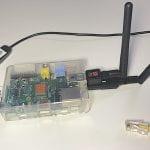This page describes how to configure the network interfaces for a Raspbery Pi running as a Wi-Fi Access Point (AP). This is just one step in a larger list of instructions, which can be found on the page Raspberry Pi Wifi Access Point. The instructions here do not include the routing, which is covered later. […]
Network Configuration for a Wi-Fi Access Point
